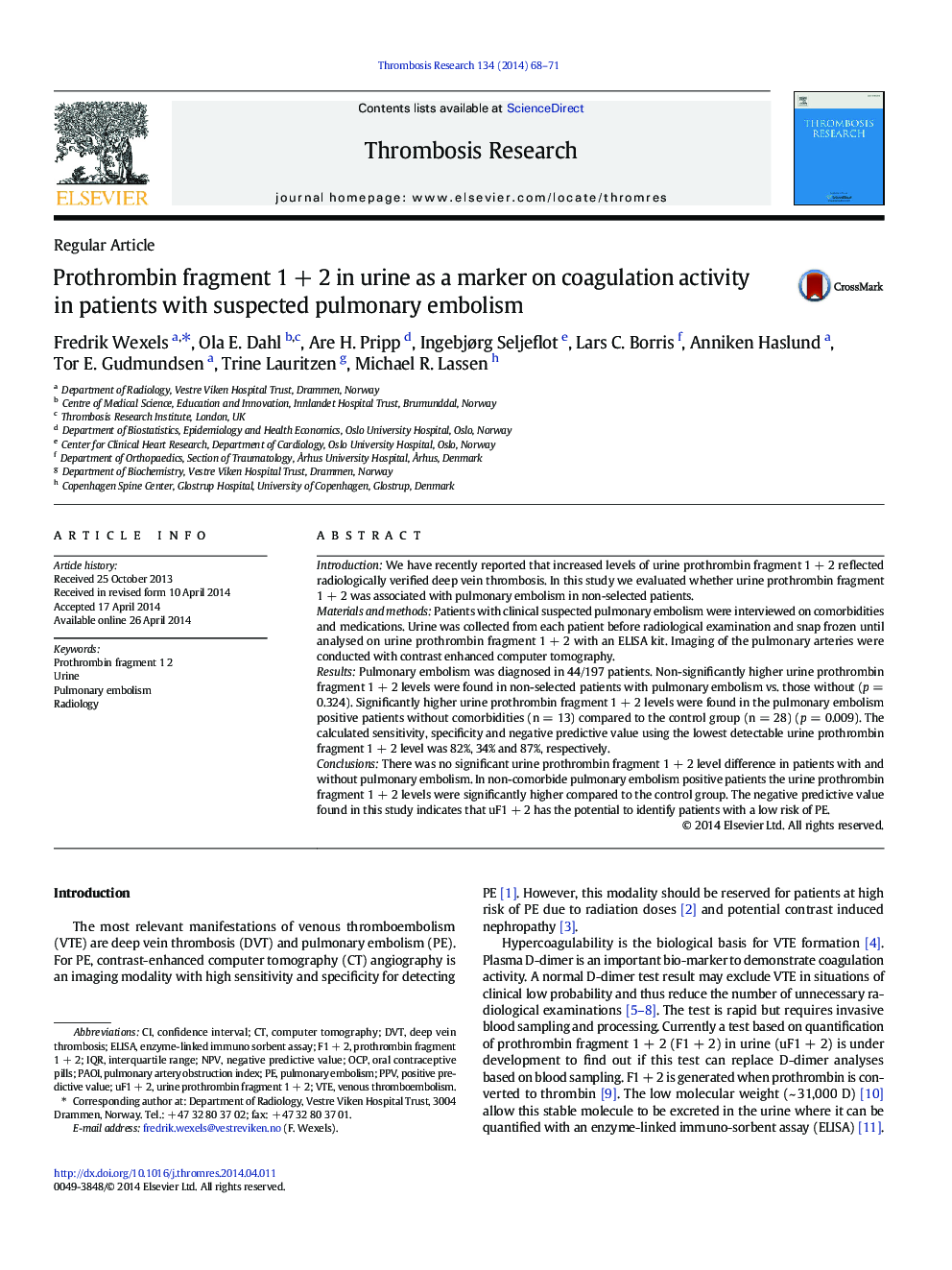| Article ID | Journal | Published Year | Pages | File Type |
|---|---|---|---|---|
| 6000835 | Thrombosis Research | 2014 | 4 Pages |
IntroductionWe have recently reported that increased levels of urine prothrombin fragment 1 + 2 reflected radiologically verified deep vein thrombosis. In this study we evaluated whether urine prothrombin fragment 1 + 2 was associated with pulmonary embolism in non-selected patients.Materials and methodsPatients with clinical suspected pulmonary embolism were interviewed on comorbidities and medications. Urine was collected from each patient before radiological examination and snap frozen until analysed on urine prothrombin fragment 1 + 2 with an ELISA kit. Imaging of the pulmonary arteries were conducted with contrast enhanced computer tomography.ResultsPulmonary embolism was diagnosed in 44/197 patients. Non-significantly higher urine prothrombin fragment 1 + 2 levels were found in non-selected patients with pulmonary embolism vs. those without (p = 0.324). Significantly higher urine prothrombin fragment 1 + 2 levels were found in the pulmonary embolism positive patients without comorbidities (n = 13) compared to the control group (n = 28) (p = 0.009). The calculated sensitivity, specificity and negative predictive value using the lowest detectable urine prothrombin fragment 1 + 2 level was 82%, 34% and 87%, respectively.ConclusionsThere was no significant urine prothrombin fragment 1 + 2 level difference in patients with and without pulmonary embolism. In non-comorbide pulmonary embolism positive patients the urine prothrombin fragment 1 + 2 levels were significantly higher compared to the control group. The negative predictive value found in this study indicates that uF1 + 2 has the potential to identify patients with a low risk of PE.
